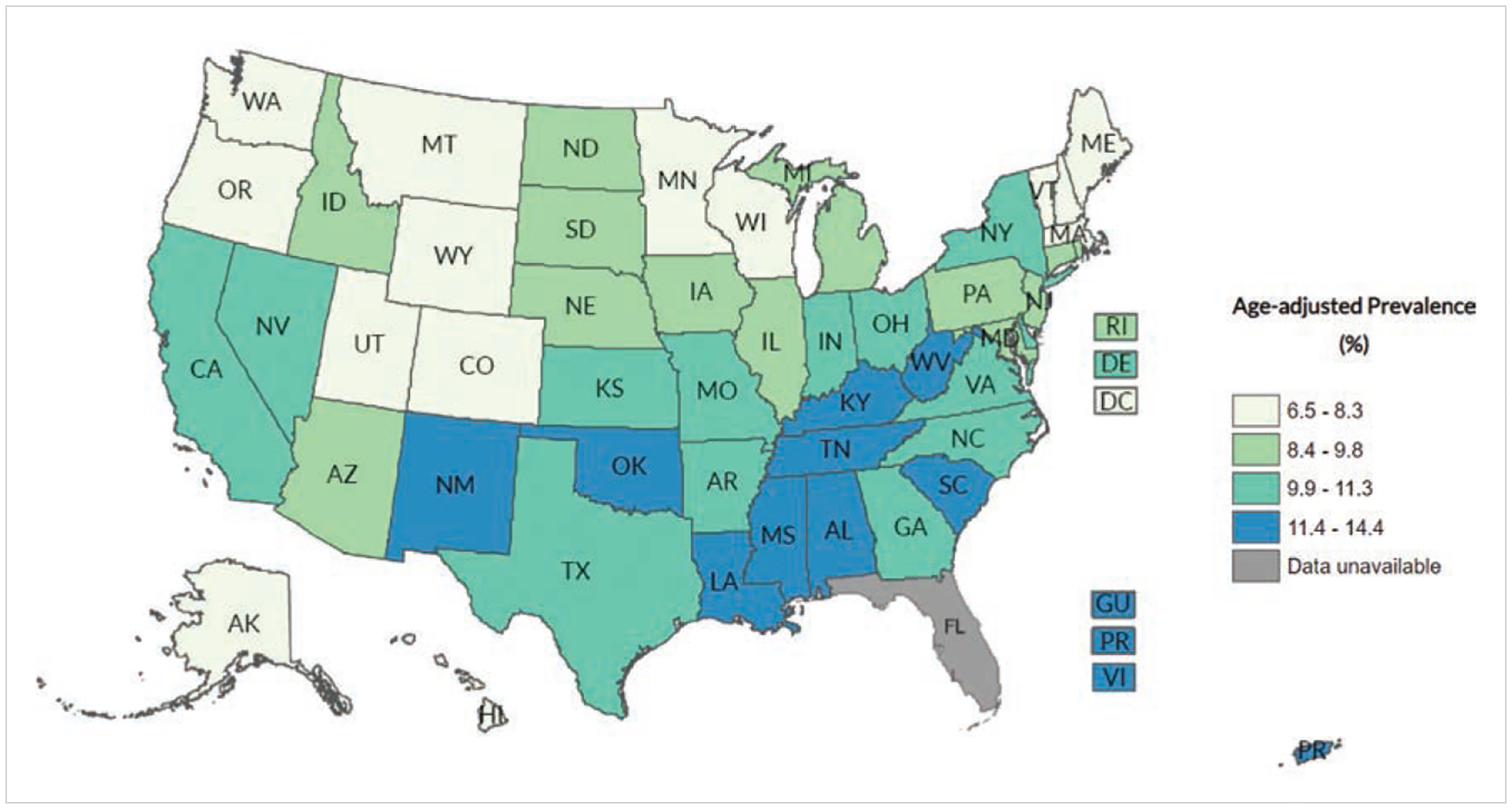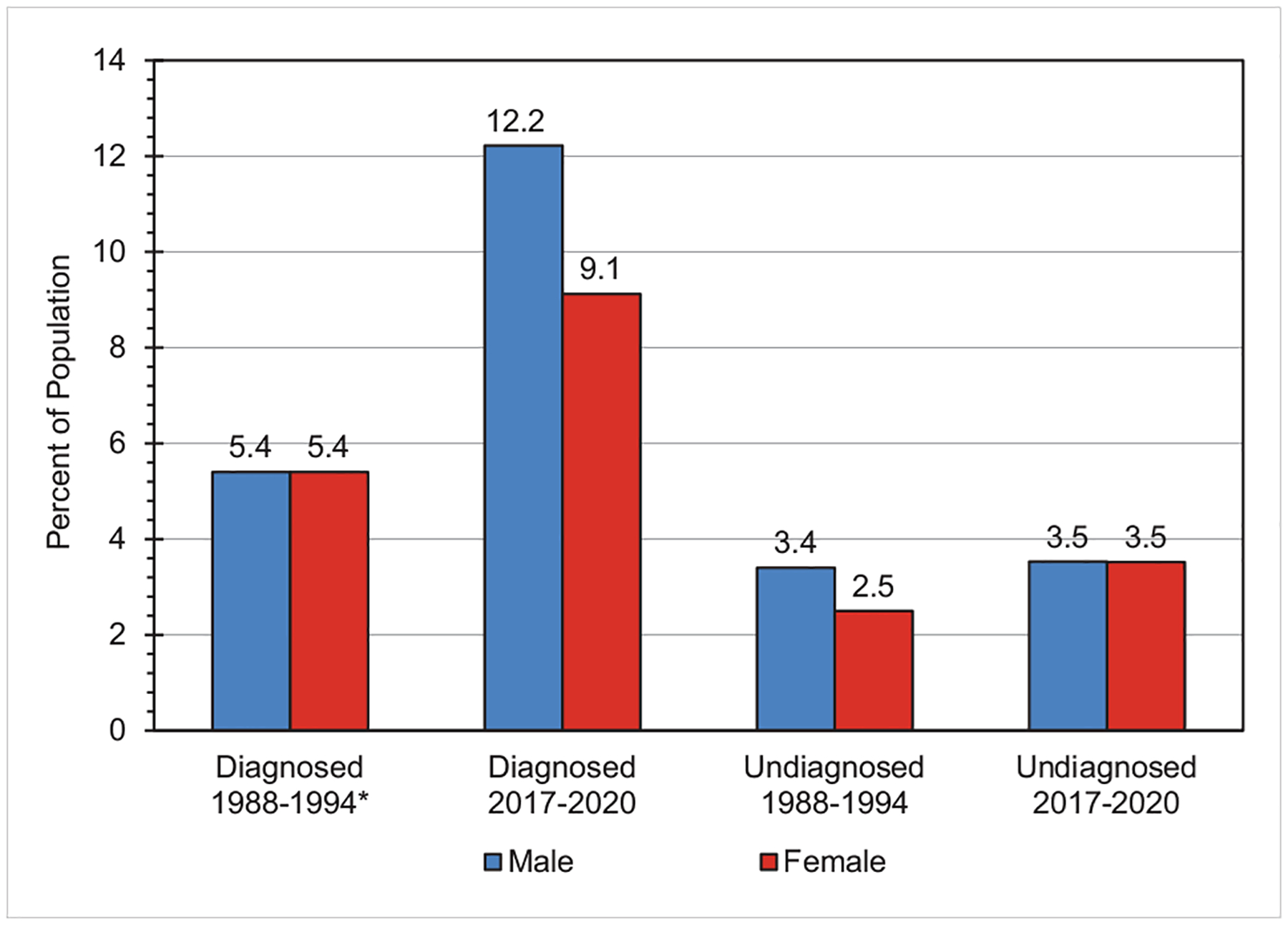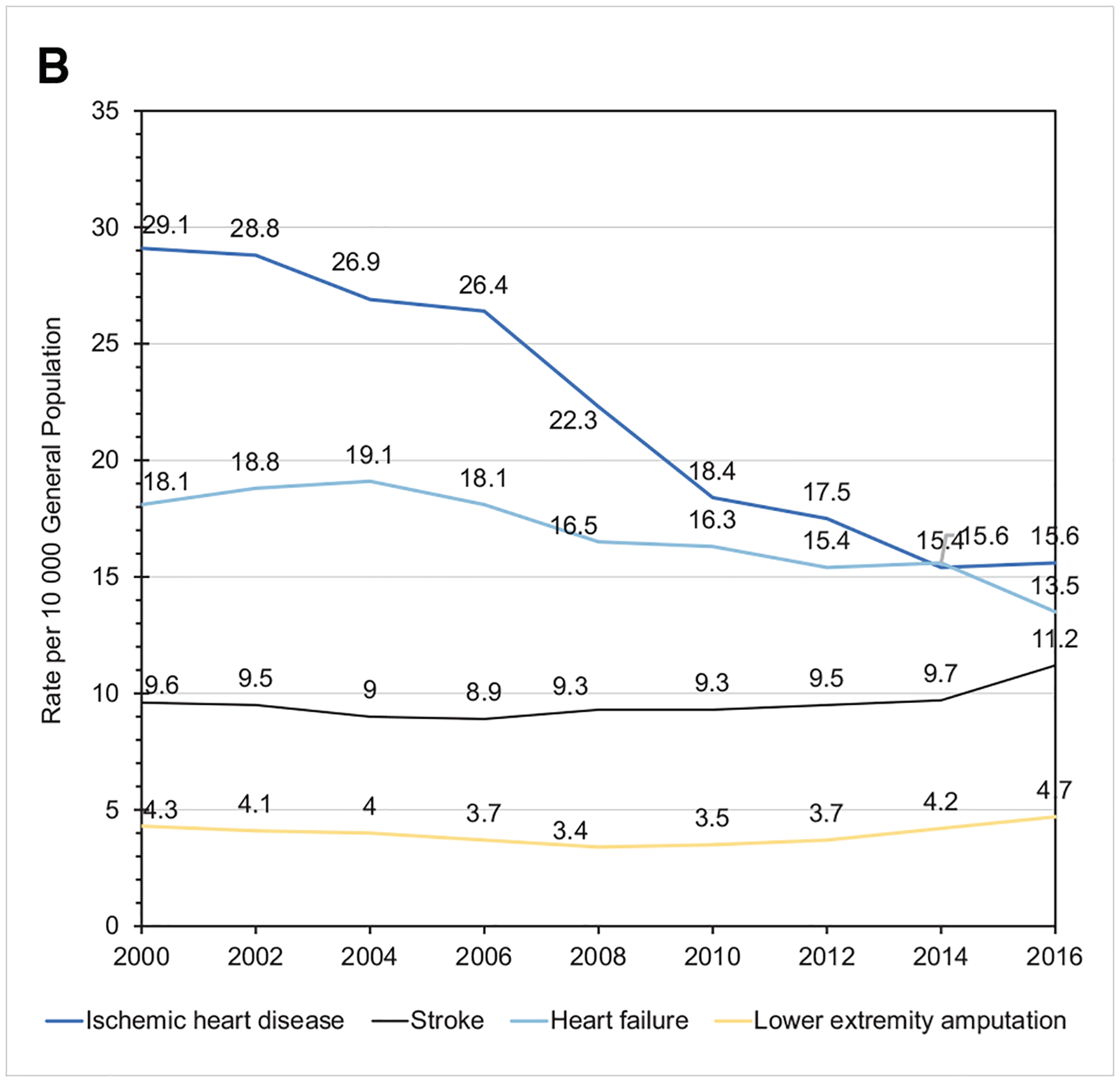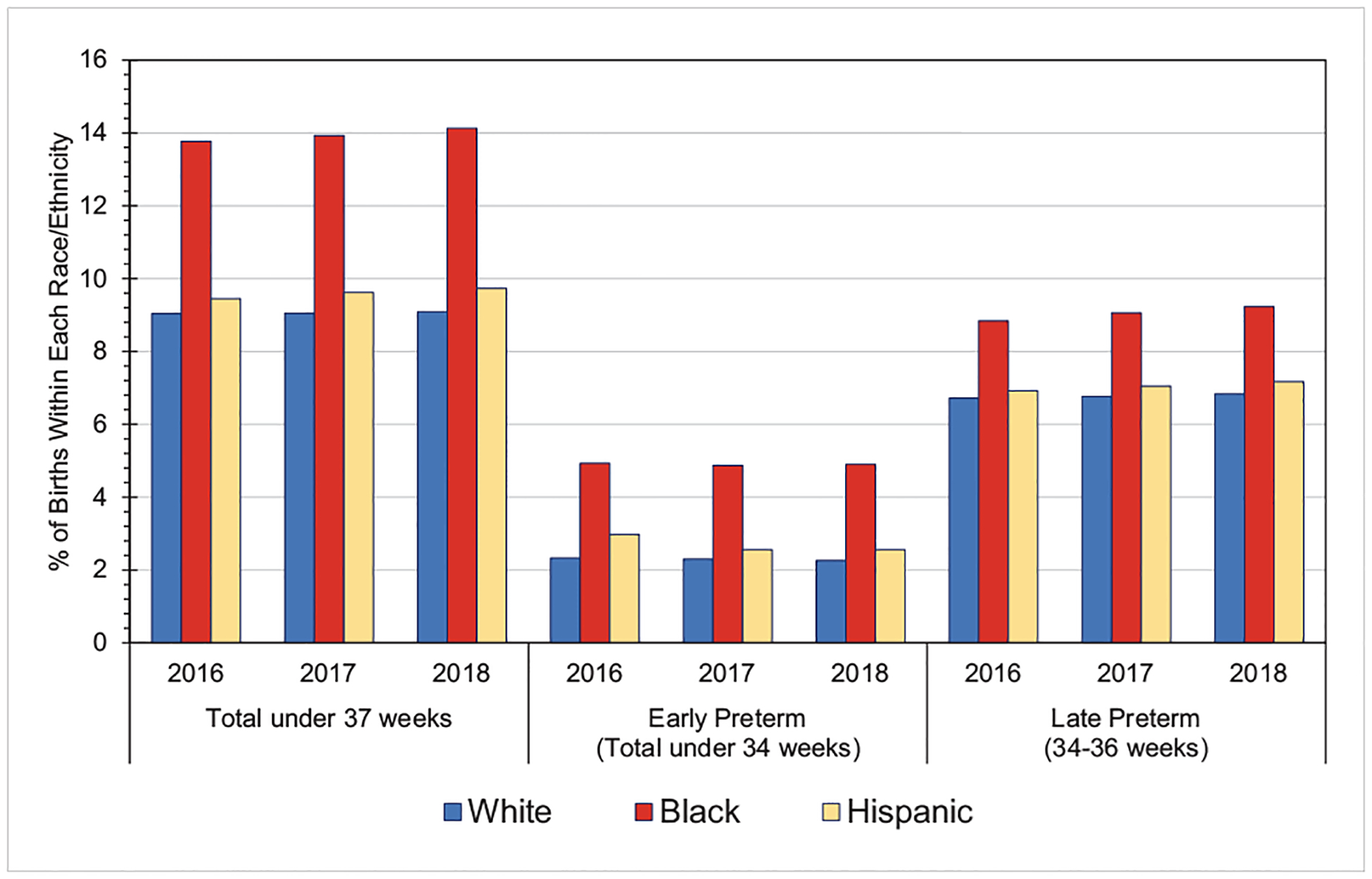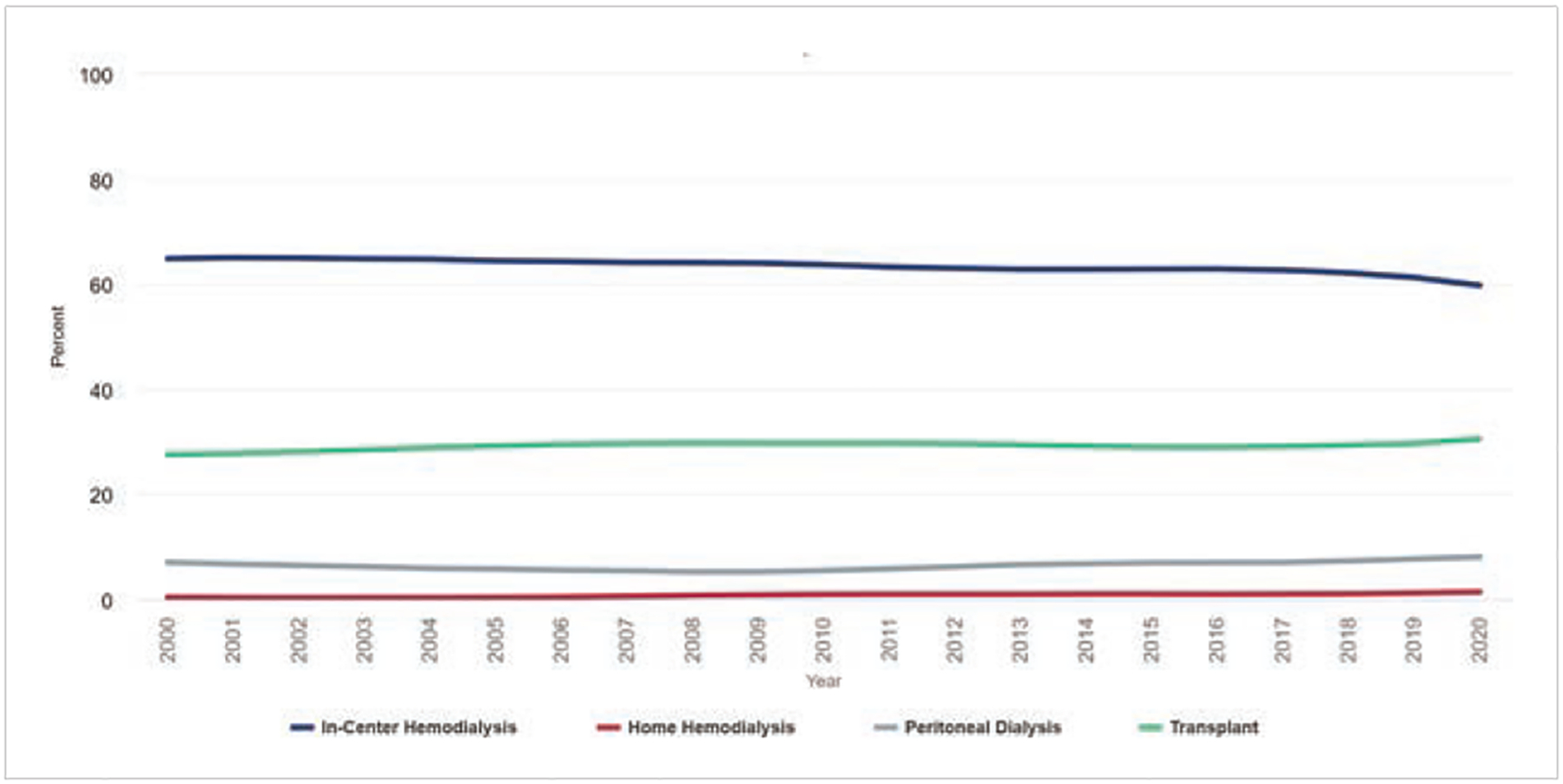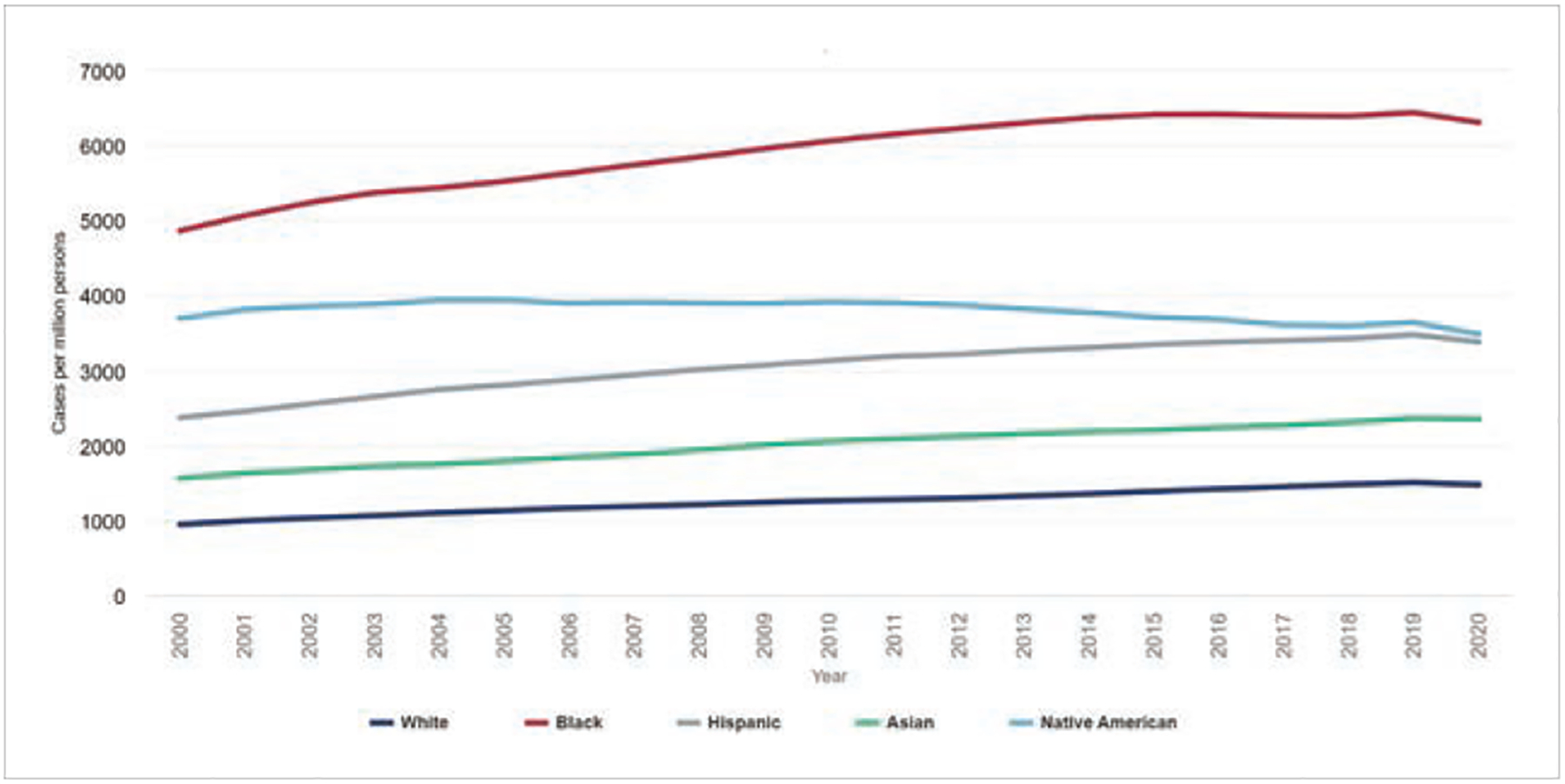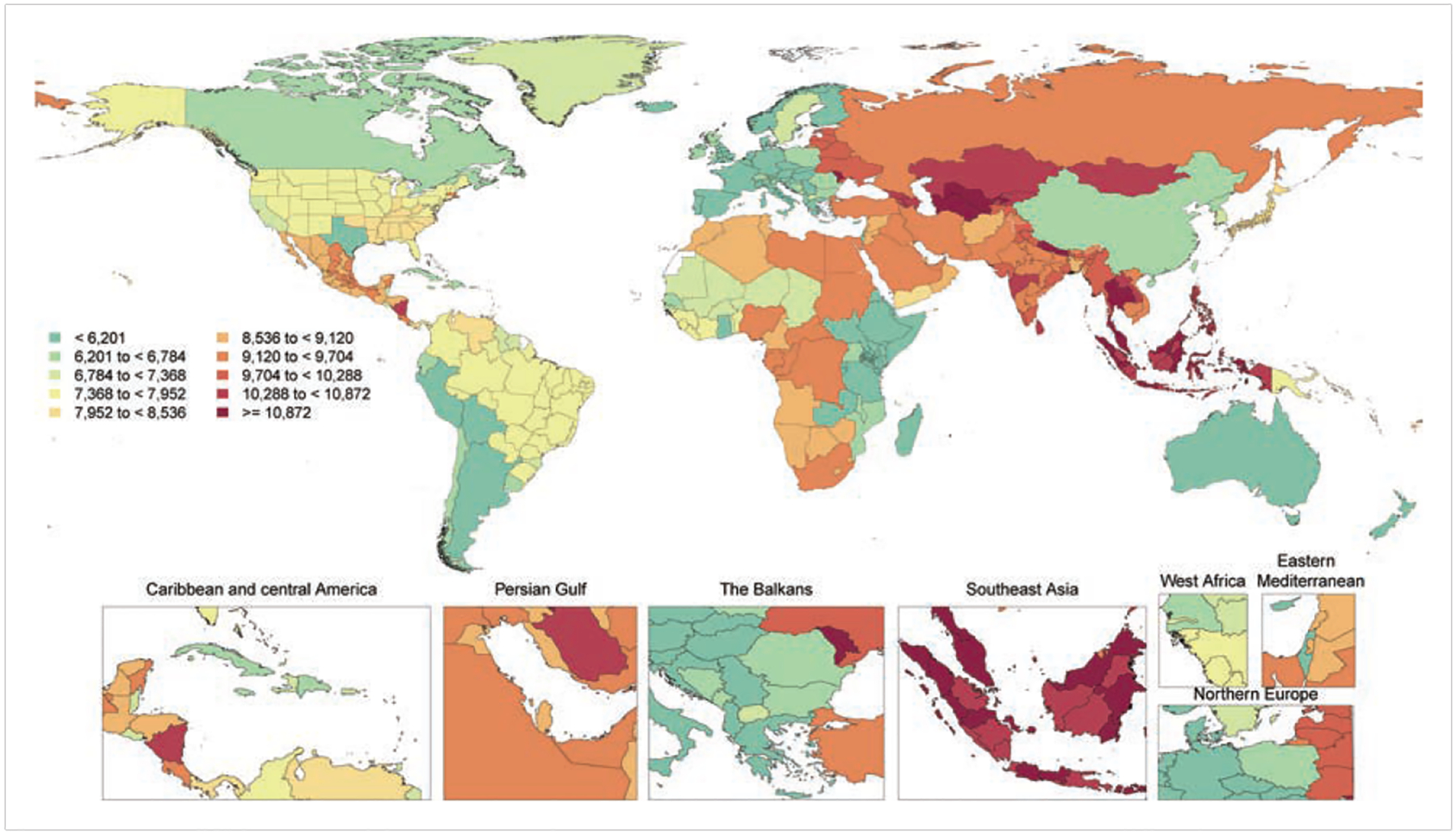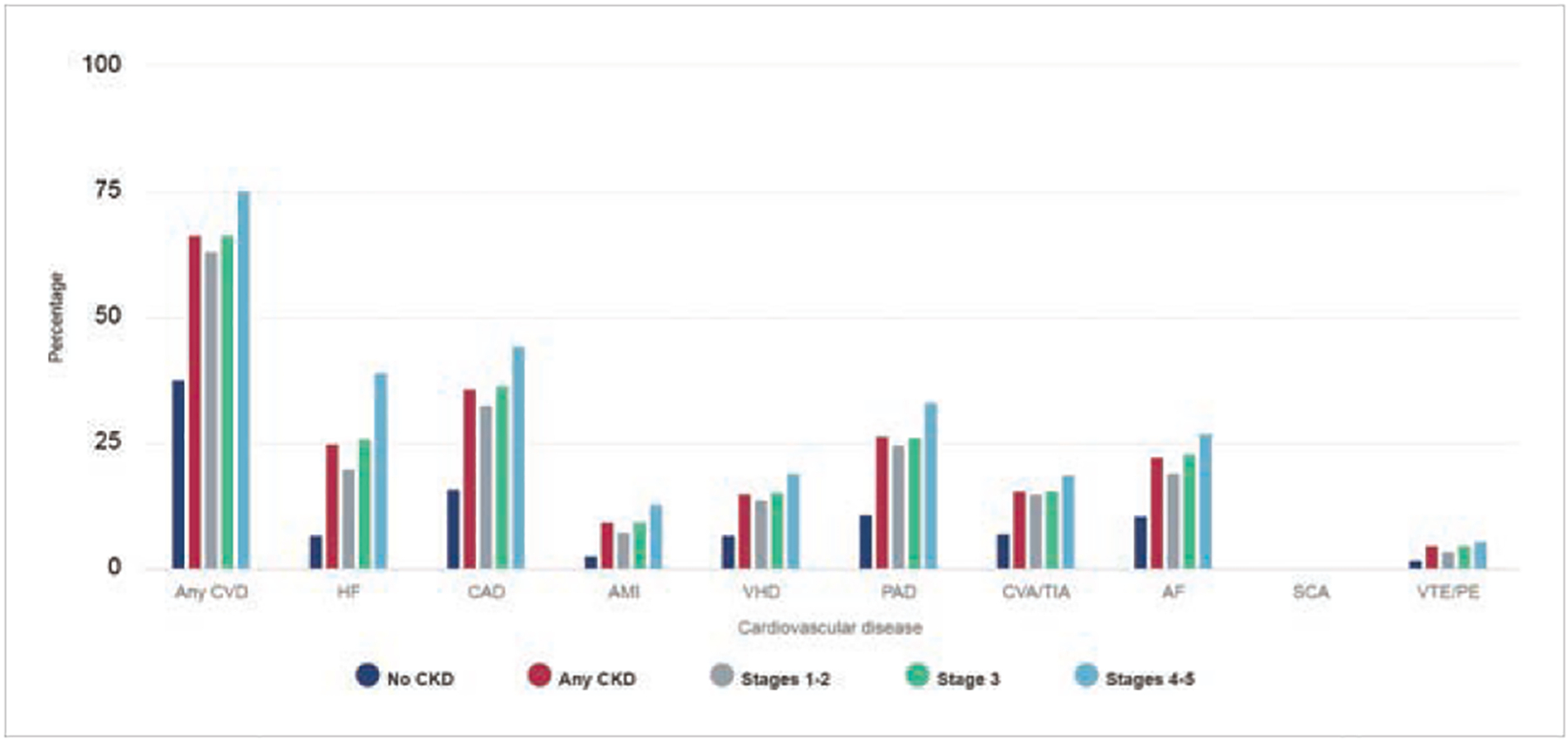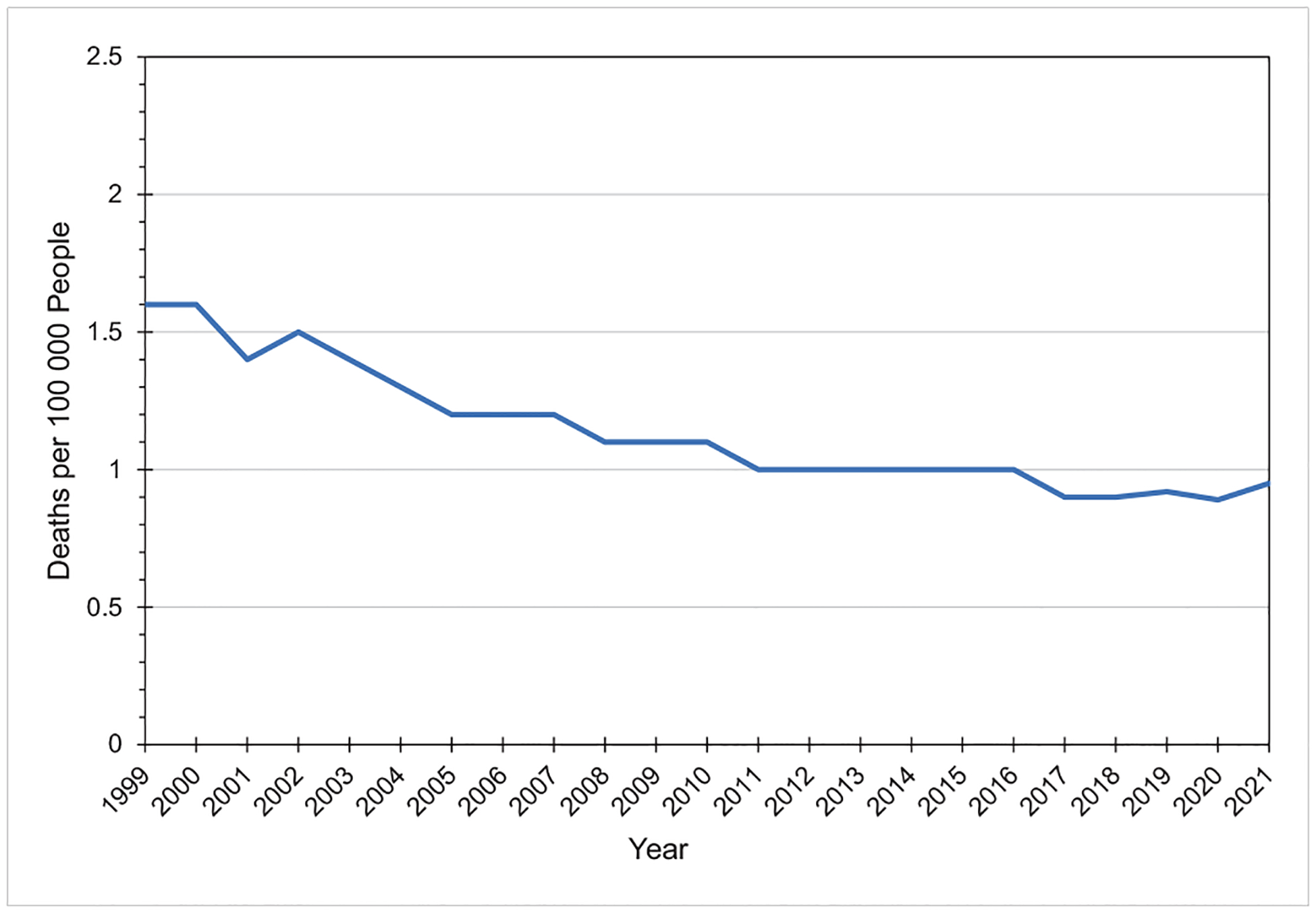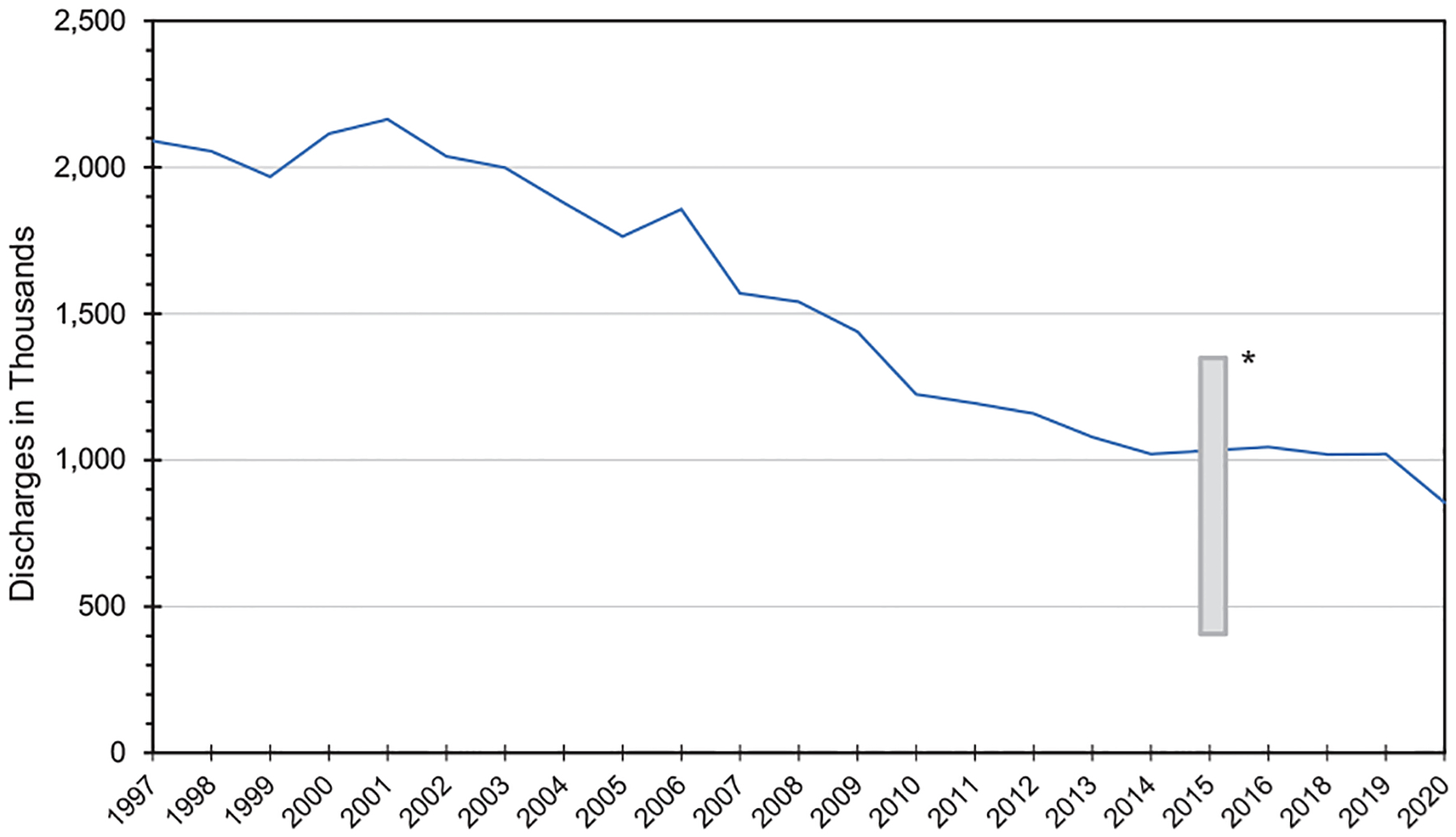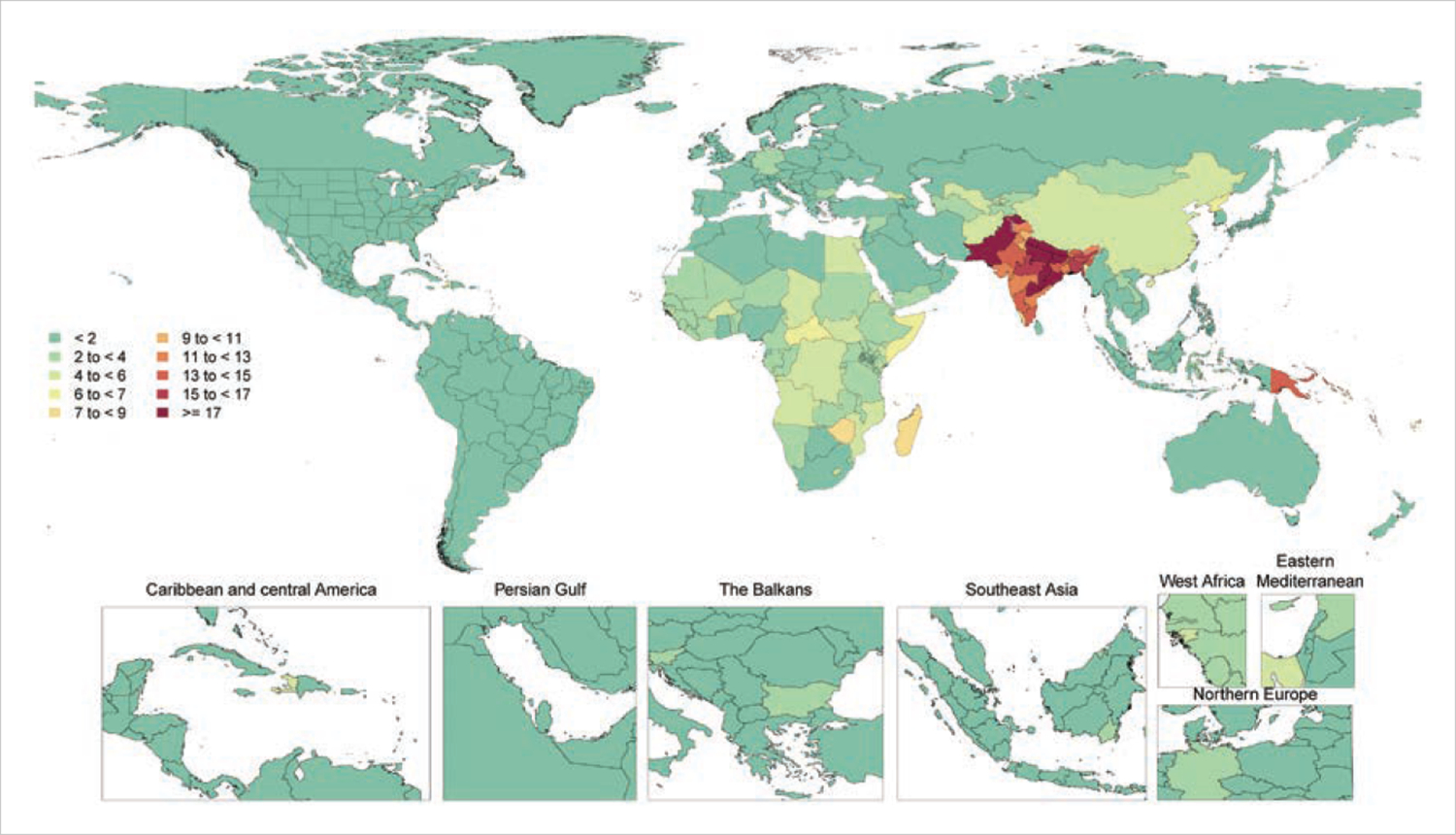- 4D
Die Deutsche Diabetes Dialyze Studie
- AAA
abdominal aortic aneurysm
- AAMR
age-adjusted mortality rate
- ABC-ACS
Age, Biomarkers, Clinical History, Acute Coronary Syndrome Score
- ABI
ankle-brachial index
- ACC
American College of Cardiology
- ACCORD
Action to Control Cardiovascular Risk in Diabetes
- ACE
angiotensin-converting enzyme
- ACR
albumin-to-creatinine ratio
- ACS
acute coronary syndrome
- ACTION
Acute Coronary Treatment and Intervention Outcomes Network
- AD
Alzheimer disease
- ADAMS
Aging, Demographics, and Memory Study
- ADRD
Alzheimer disease and related dementia
- ADVANCE
Action in Diabetes and Vascular Disease: Preterax and Diamicron-MR Controlled Evaluation
- AF
atrial fibrillation or atriofibrillation
- AFFINITY
Assessment of Fluoxetine in Stroke Recovery
- AGES
Age, Gene/Environment Susceptibility
- AHA
American Heart Association
- AHEI
Alternative Health Eating Index
- AHI
apnea-hypopnea index
- aHR
adjusted hazard ratio
- AHS-2
Adventist Health Study 2
- AIM-HIGH
Atherothrombosis Intervention in Metabolic Syndrome With Low HDL/High Triglycerides and Impact on Global Health Outcomes
- aIRR
adjusted incidence rate ratio
- AIS
acute ischemic stroke
- ALLHAT
Antihypertensive and Lipid-Lowering Treatment to Prevent Heart Attack Trial
- AMI
acute myocardial infarction
- ANP
atrial natriuretic peptide
- aOR
adjusted odds ratio
- AP
angina pectoris
- APACE
Advantageous Predictors of Acute Coronary Syndromes Evaluation
- APO
adverse pregnancy outcome
- app
application
- ARB
angiotensin receptor blocker
- ARGEN-IAM-ST
Pilot Study on ST Elevation Acute Myocardial Infarction
- ARIC
Atherosclerosis Risk in Communities
- ARIC-NCS
Atherosclerosis Risk in Communities–Neurocognitive Study
- ARIC-PET
Atherosclerosis Risk in Communities–Positron Emission Tomography
- aRR
adjusted relative risk
- ARVC
arrhythmogenic right ventricular cardiomyopathy
- ASB
artificially sweetened beverage
- ASCOD
atherosclerosis, small vessel disease, cardiac pathology, other causes, dissection
- ASCVD
atherosclerotic cardiovascular disease
- ASCVD-PCE
Atherosclerotic Cardiovascular Disease Pooled Cohort Equation
- ASD
atrial septal defect
- ASPECTS
Alberta Stroke Program Early CT Score
- ASPIRE
Assessing the Spectrum of Pulmonary Hypertension Identified at a Referral Centre Registry
- ASPREE
Aspirin in Reducing Events in the Elderly
- ATP III
Adult Treatment Panel III
- AUC
area under the curve
- AVAIL
Adherence Evaluation After Ischemic Stroke Longitudinal
- AVATAR
Aortic Valve Replacement Versus Conservative Treatment in Asymptomatic Severe Aortic Stenosis
- AWHS
Aragon Workers Health Study
- BASIC
Brain Attack Surveillance in Corpus Christi
- BEST
Randomized Comparison of Coronary Artery Bypass Surgery and Everolimus-Eluting Stent Implantation in the Treatment of Patients With Multivessel Coronary Artery Disease
- BEST-CLI
Best Surgical Therapy in Patients With Chronic Limb-Threatening Ischemia
- BiomarCaRE
Biomarker for Cardiovascular Risk Assessment in Europe
- BioSHaRe
Biobank Standardization and Harmonization for Research Excellence in the European Union
- BMI
body mass index
- BNP
B-type natriuretic peptide
- BP
blood pressure
- BRAVO
Building, Relating, Assessing, and Validating Outcomes
- BRFSS
Behavioral Risk Factor Surveillance System
- BWHS
Black Women’s Health Study
- CABANA
Catheter Ablation vs Antiarrhythmic Drug Therapy for Atrial Fibrillation
- CABG
coronary artery bypass graft
- CAC
coronary artery calcification
- CAD
coronary artery disease
- CAIDE
Cardiovascular Risk Factors, Aging and Dementia
- CALIBER UK
Cardiovascular Research Using Linked Bespoke Studies and Electronic Health Records
- CANHEART
Cardiovascular Health in Ambulatory Care Research Team
- CARDIA
Coronary Artery Risk Development in Young Adults
- CARDIo-GRAM
Coronary Artery Disease Genome-Wide Replication and Meta-Analysis
- CARDIOo-GRAM-plusC4D
Coronary Artery Disease Genome-Wide Replication and Meta-Analysis Plus the Coronary Artery Disease (C4D)
- CARES
Cardiac Arrest Registry to Enhance Survival
- CAS
carotid artery stenting
- CASCADE FH
Cascade Screening for Awareness and Detection of Familial Hypercholesterolemia
- CASI
Cognitive Abilities Screening Instrument
- CASQ2
calsequestrin 2
- CAVIAAR
Conservation Aortique Valvulaire dans les Insuffisances Aortiques et les Anévrismes de la Racine aortique
- CCD
congenital cardiovascular defect
- CCTA
coronary computed tomography angiography
- CDC
Centers for Disease Control and Prevention
- CDC WONDER
Centers for Disease Control and Prevention Wide-Ranging Online Data for Epidemiologic Research
- CEA
carotid endarterectomy
- CERAD-TS
Consortium to Establish a Registry for Alzheimer’s Disease Neuropsychological Battery, Total Score
- CGPS
Copenhagen General Population Study
- CHA2DS2-VASc
clinical prediction rule for estimating the risk of stroke based on congestive heart failure, hypertension, diabetes, and sex (1 point each); age ≥75 years and stroke/transient ischemic attack/thromboembolism (2 points each); plus history of vascular disease, age 65 to 74 years, and (female) sex category
- CHAMP-HF
Change the Management of Patients With Heart Failure
- CHAP
Chicago Health and Aging Project
- CHARGE-AF
Cohorts for Heart and Aging Research in Genomic Epidemiology–Atrial Fibrillation
- CHARLS
China Health and Retirement Longitudinal Study
- CHARM
Candesartan in Heart Failure–Assessment of Reduction in Mortality and Morbidity
- CHD
coronary heart disease
- CHS
Cardiovascular Health Study
- CI
confidence interval
- CICAT
Codi Ictus Catalunya Registry
- CKD
chronic kidney disease
- CkiD
Chronic Kidney Disease in Children
- CLARIFY
Community Benefit of No-Charge Calcium Score Screening Program
- CLEAR
Cholesterol Lowering via Bempedoic Acid, an ACL-Inhibiting Regimen
- CLTI
chronic limb-threatening ischemia
- CNSR
China National Stroke Registries
- COAPT
Cardiovascular Outcomes Assessment of the MitraClip Percutaneous Therapy for Heart Failure Patients With Functional Mitral Regurgitation
- COAST
Comparative Outcomes Services Utilization Trends
- COMPASS
Cardiovascular Outcomes for People Using Anticoagulation Strategies
- CONFIRM
Coronary CT Angiography Evaluation for Clinical Outcomes: An International Multicenter Registry
- CORAL
Cardiovascular Outcomes in Renal Atherosclerotic Lesions
- CORE-Thailand
Cohort of Patients With High Risk for Cardiovascular Events–Thailand
- COSMIC
Cohort Studies of Memory in an International Consortium
- COVID-19
coronavirus disease 2019
- CPAP
continuous positive airway pressure
- CPR
cardiopulmonary resuscitation
- CPVT
catecholaminergic polymorphic ventricular tachycardia
- CREOLE
Comparison of Three Combination Therapies in Lowering Blood Pressure in Black Africans
- CRIC
Chronic Renal Insufficiency Cohort
- CRP
C-reactive protein
- CSA
community-supported agriculture
- CSC
comprehensive stroke center
- CT
computed tomography
- CTEPH
chronic thromboembolic pulmonary hypertension
- CVD
cardiovascular disease
- CVD PREDICT
Cardiovascular Disease Policy Model for Risk, Events, Detection, Interventions, Costs, and Trends
- CVH
cardiovascular health
- CVI
chronic venous insufficiency
- DALY
disability-adjusted life-year
- DANISH
Danish Study to Assess the Efficacy of ICDs in Patients With Non-Ischaemic Systolic Heart Failure on Mortality
- DASH
Dietary Approaches to Stop Hypertension
- DBP
diastolic blood pressure
- DCCT/EDIC
Diabetes Control and Complications Trial/Epidemiology of Diabetes Interventions and Complications
- DCM
dilated cardiomyopathy
- DEBATS
Discussion on the Health Effect of Aircraft Noise Study
- DHA
docosahexaenoic acid
- DIAMANTE
Diabetes Meta-Analysis of Trans-Ethnic Association Studies
- DII
Dietary Inflammatory Index
- DNA
deoxyribonucleic acid
- DOAC
direct oral anticoagulant
- DPP
Diabetes Prevention Program
- DREAM-LDL
Diabetes (Fasting Blood Glucose Level), Rating (National Institutes of Health Stroke Scale), Level of Education, Age, Baseline Montreal Cognitive Assessment Scale Score, and LDL-C Level
- DR’s EXTRA
Dose Responses to Exercise Training
- DVT
deep vein thrombosis
- EAGLES
Study Evaluating the Safety and Efficacy of Varenicline and Bupropion for Smoking Cessation in Subjects With and Without a History of Psychiatric Disorders
- e-cigarette
electronic cigarette
- ECG
electrocardiogram
- ED
emergency department
- EDIC
Epidemiology of Diabetes Interventions and Complications
- EF
ejection fraction
- eGFR
estimated glomerular filtration rate
- ELSA
English Longitudinal Study of Ageing
- EMS
emergency medical services
- EPA
eicosapentaenoic acid
- EPIC
European Prospective Investigation Into Cancer and Nutrition
- ERICA
Study of Cardiovascular Risks in Adolescents
- ERP
early repolarization pattern
- ESRD
end-stage renal disease
- EUCLID
Examining Use of Ticagrelor in PAD
- EVEREST
Endovascular Valve Edge-to-Edge Repair
- EVEREST II HRS
Endovascular Valve Edge-to-Edge Repair High-Risk Study
- EVITA
Effect of Vitamin D on Mortality in Heart Failure
- EVITA
Evaluation of Varenicline in Smoking Cessation for Patients Post-Acute Coronary Syndrome
- EXAMINE
Examination of Cardiovascular Outcomes With Alogliptin Versus Standard of Care
- FAMILIA
Family-Based Approach in a Minority Community Integrating Systems–Biology for Promotion of Health
- FDA
US Food and Drug Administration
- FH
familial hypercholesterolemia
- FHS
Framingham Heart Study
- FIDELIO-DKD
Finerenone in Reducing Kidney Failure and Disease Progression in Diabetic Kidney Disease
- FINGER
Finnish Geriatric Intervention Study to Prevent Cognitive Impairment and Disability
- FinnDiane
Finnish Diabetic Nephropathy
- FINRISK
Finnish Population Survey on Risk Factors for Chronic, Noncommunicable Diseases
- FMD
flow-mediated dilation
- FOURIER
Further Cardiovascular Outcomes Research With PCSK9 Inhibition in Subjects With Elevated Risk
- FPG
fasting plasma glucose
- FPL
federal poverty level
- FRS
Framingham Risk Score
- FVL
factor V Leiden
- GARFIELD-VTE
Global Anticoagulant Registry in the Field–Venous Thromboembolism
- GBD
Global Burden of Disease
- GCNKSS
Greater Cincinnati/Northern Kentucky Stroke Study
- GISSI-3
Gruppo Italiano per lo Studio della Sopravvivenza nell’Infarto Miocardico
- GLORIA-AF
Global Registry on Long-Term Oral Antithrombotic Treatment in Patients With Atrial Fibrillation
- GLP1-RA
glucagon-like peptide 1 receptor agonist
- GRS
genetic risk score
- GWAS
genome-wide association studies
- GWTG
Get With The Guidelines
- GWTG-AFIB
Get With The Guidelines–Atrial Fibrillation
- HANDLS
Health Aging in Neighborhoods of Diversity Across the Life Span
- HAPIEE
Health, Alcohol and Psychosocial Factors in Eastern Europe
- HAPO
Hyperglycemia and Adverse Pregnancy Outcome
- HARMS2-AF
Hypertension, Age, Raised Body Mass Index, Male Sex, Sleep Apnea, Smoking, Alcohol
- HbA1c
hemoglobin A1c (glycosylated total cholesterol)
- HBP
high blood pressure
- HCHS/SOL
Hispanic Community Health Study/Study of Latinos
- HCM
hypertrophic cardiomyopathy
- HCUP
Healthcare Cost and Utilization Project
- HD
heart disease
- HDL
high-density lipoprotein
- HDL-C
high-density lipoprotein cholesterol
- HDP
hypertensive disorders of pregnancy
- HeartScore
Heart Strategies Concentrating on Risk Evaluation
- HEI
Healthy Eating Index
- HELENA
Healthy Lifestyle in Europe by Nutrition in Adolescence
- HF
heart failure
- HF-ACTION
Heart Failure: A Controlled Trial Investigating Outcomes of Exercise Training
- HfpEF
heart failure with preserved ejection fraction
- HfrEF
heart failure with reduced ejection fraction
- High-STEACS
High-Sensitivity Troponin in the Evaluation of Patients With Suspected Acute Coronary Syndrome
- HIV
human immunodeficiency virus
- HLHS
hypoplastic left-heart syndrome
- HPFS
Health Professionals Follow-Up Study
- HPPCA
Health Promotion Program for Children and Adolescents
- HPS
Heart Protection Study
- HR
hazard ratio
- HRRP
Hospital Readmissions Reduction Program
- HRS
Health and Retirement Study
- HYVET
Hypertension in the Very Elderly Trial
- ICD
implantable cardioverter defibrillator
-
ICD
International Classification of Diseases
-
ICD-9
International Classification of Diseases, 9th Revision
-
ICD-9-CM
International Classification of Diseases, 9th Revision, Clinical Modification
-
ICD-10
International Classification of Diseases, 10th Revision
-
ICD-10-CM
International Classification of Diseases, 10th Revision, Clinical Modification
- ICE-PLUS
International Collaboration on Endocarditis–PLUS
- ICH
intracerebral hemorrhage
- ICU
intensive care unit
- IDF
International Diabetes Federation
- IE
infective endocarditis
- IE After TAVI
Infective Endocarditis After Transcatheter Aortic Valve Implantation
- IHCA
in-hospital cardiac arrest
- IHD
ischemic heart disease
- IHM
interstage home monitoring program
- ILCOR
International Liaison Committee on Resuscitation
- IMPACT
International Model for Policy Analysis of Agricultural Commodities and Trade
- IMPROVE
Carotid Intima–Media Thickness (IMT) and IMT Progression as Predictors of Vascular Events in a High-Risk European Population
- IMPROVE-IT
Improved Reduction of Outcomes: Vytorin Efficacy International Trial
- IMT
intima-media thickness
- INTER-MACS
Interagency Registry for Mechanically Assisted Circulatory Support
- IPSS
International Pediatric Stroke Study
- IQR
interquartile range
- IRAD
International Registry of Acute Aortic Dissection
- IRR
incidence rate ratio
- ISCHEMIA
International Study of Comparative Health Effectiveness With Medical and Invasive Approaches
- IVIG
intravenous immunoglobulin
- JHS
Jackson Heart Study
- KD
Kawasaki disease
- LASI
Longitudinal Aging Study in India
- LBW
low birth weight
- LDL
low-density lipoprotein
- LDL-C
low-density lipoprotein cholesterol
- LEAD
Louisiana Experiment Assessing Diabetes
- LEADER
Liraglutide Effect and Action in Diabetes: Evaluation of Cardiovascular Outcome Results
- LIBRA
Lifestyle for Brain Health
- LOAD
late-onset Alzheimer disease
- Look AHEAD
Look: Action for Health in Diabetes
- LOOP
Implantable Loop Recorder Detection of Atrial Fibrillation to Prevent Stroke
- LQTS
long QT syndrome
- LTPA
leisure-time physical activity
- LV
left ventricular
- LVAD
left ventricular assist device
- LVEF
left ventricular ejection fraction
- LVH
left ventricular hypertrophy
- MACE
major adverse cardiovascular event
- MAP
Memory and Aging Project
- MAPT
Multidomain Alzheimer Preventive Trial
- MARS
Minority Aging Research Study
- MCI
mild cognitive impairment
- MDCS
Malmö Diet and Cancer Study
- MEPS
Medical Expenditure Panel Survey
- MESA
Multi-Ethnic Study of Atherosclerosis
- MET
metabolic equivalent
- MetS
metabolic syndrome
- MHAS
Mexican Health and Aging Study
- MHO
metabolically healthy obesity
- MI
myocardial infarction
- MIDA
Mitral Regurgitation International Database
- MIDUS
Midlife in the United States
- MIMS
Monitor Independent Movement Summary
- MIND-China
Multimodal Interventions to Delay Dementia and Disability in Rural China
- MIS-C
multisystem inflammatory syndrome in children
- MITRA-FR
Percutaneous Repair With the MitraClip Device for Severe Functional/Secondary Mitral Regurgitation
- MMSE
Mini-Mental State Examination
- MONICA
Monitoring Trends and Determinants of Cardiovascular Disease
- MR
mitral regurgitation
- MRI
magnetic resonance imaging
- MTF
Monitoring the Future
- MUSIC
Muerte Súbita en Insuficiencia Cardiaca
- MVP
Million Veterans Program
- MVPA
moderate to vigorous physical activity
- NACC
National Alzheimer’s Dementia Coordinating Center
- NAFLD
nonalcoholic fatty liver disease
- NAMCS
National Ambulatory Medical Care Survey
- NCDR
National Cardiovascular Data Registry
- NCHS
National Center for Health Statistics
- NH
non-Hispanic
- NHAMCS
National Hospital Ambulatory Medical Care Survey
- NHANES
National Health and Nutrition Examination Survey
- NHATS
National Health and Aging Trends Study
- NHDS
National Hospital Discharge Survey
- NHIS
National Health Interview Survey
- NHLBI
National Heart, Lung, and Blood Institute
- NIH
National Institutes of Health
- NIH-AARP
National Institutes of Health–American Association of Retired Persons
- NIHSS
National Institutes of Health Stroke Scale
- NINDS
National Institutes of Neurological Disorders and Stroke
- NIPPON DATA
National Integrated Project for Prospective Observation of Noncommunicable Disease and Its Trends in Aged
- NIS
National (Nationwide) Inpatient Sample
- NNT5
number needed to treat for 5 years
- NOMAS
Northern Manhattan Study
- NOTION
Nordic Aortic Valve Intervention
- NSDUH
National Survey on Drug Use and Health
- NSHDS
Northern Sweden Health and Disease Study
- NSTEMI
non–ST-segment–elevation myocardial infarction
- NT-proBNP
N-terminal pro-B-type natriuretic peptide
- nuMoM2b
Nulliparous Pregnancy Outcomes Study: Monitoring Mothers-to-be
- NVSS
National Vital Statistics System
- NYTS
National Youth Tobacco Survey
- ODYSSEY Outcomes
Evaluation of Cardiovascular Outcomes After an Acute Coronary Syndrome During Treatment With Alirocumab
- OHCA
out-of-hospital cardiac arrest
- ONTARGET
Ongoing Telmisartan Alone and in Combination with Ramipril Global Endpoint Trial and to Telmisartan Randomized Assessment
- OR
odds ratio
- ORBIT-AF
Outcomes Registry for Better Informed Treatment of Atrial Fibrillation
- ORION-9
Trial to Evaluate the Effect of Inclisiran Treatment on Low-Density Lipoprotein Cholesterol (LDL-C) in Subjects With Heterozygous Familial Hypercholesterolemia (HeFH)
- ORION-10
Inclisiran for Participants With Atherosclerotic Cardiovascular Disease and Elevated Low-Density Lipoprotein Cholesterol
- ORION-11
Inclisiran for Subjects With ASCVD or ASCVD-Risk Equivalents and Elevated Low-Density Lipoprotein Cholesterol
- OSA
obstructive sleep apnea
- OVER
Open Versus Endovascular Repair
- PA
physical activity
- PAD
peripheral artery disease
- PAF
population attributable fraction
- PAGE
Placental Abruption Genetic Epidemiology
- PAH
pulmonary arterial hypertension
- PAPE
Peruvian Abruptio Placentae Epidemiology
- PAR
population attributable risk
- PARADIGM
Progression of Atherosclerotic Plaque Determined by Computed Tomographic Angiography Imaging
- PARTNER
Placement of Aortic Transcatheter Valve
- PATH
Population Assessment of Tobacco and Health
- PCAIS
posterior circulation arterial ischemic stroke
- PCE
Pooled Cohort Equations
- PCI
percutaneous coronary intervention
- PCSK9
proprotein convertase subtilisin/kexin type 9
- PD
Parkinson disease
- PE
pulmonary embolism
- PESA
Progression of Early Subclinical Atherosclerosis
- PH
pulmonary hypertension
- PHIRST
Pulmonary Arterial Hypertension and Response to Tadalafil Study
- PINNACLE
Practice Innovation and Clinical Excellence
- PLATO
A Comparison of Ticagrelor [AZD6140] and Clopidogrel in Patients With Acute Coronary Syndrome
- PM2.5
fine particulate matter <2.5-μm diameter
- POINT
Platelet-Oriented Inhibition in New TIA and Minor Ischemic Stroke
- PORTRAIT
Patient-Centered Outcomes Related to Treatment Practices in Peripheral Arterial Disease: Investigating Trajectories
- PPCM
peripartum cardiomyopathy
- PPSW
Prospective Population Study of Women in Gothenburg
- PR
prevalence ratio
- PRECOM-BAT
Premier of Randomized Comparison of Bypass Surgery Versus Angioplasty Using Sirolimus Stents in Patients With Left Main Coronary Artery Disease
- PREDIMED
Prevención con Dieta Mediterránea
- PreDIVA
Prevention of Dementia by Intensive Vascular Care
- PREMA
Prediction of Metabolic Syndrome in Adolescence
- PREMIER
Lifestyle Interventions for Blood Pressure Control
- PREVEND
Prevention of Renal and Vascular End-Stage Disease
- ProDiGY
Progress in Diabetes Genetics in Youth
- PROFESS
Prevention Regimen for Effectively Avoiding Second Stroke
- PROGRESS
Perindopril Protection Against Recurrent Stroke Study
- PROMINENT
Pemafibrate to Reduce Cardiovascular Outcomes by Reducing Triglycerides in Patients With Diabetes
- PROTECTED TAVR
Stroke Protection With Sentinel During Transcatheter Aortic Valve Replacement
- PRS
polygenic risk score
- PTB
preterm birth
-
P
trend
P for trend
- PTS
postthrombotic syndrome
- PUFA
polyunsaturated fatty acid
- PURE
Prospective Urban Rural Epidemiology
- PWV
pulse-wave velocity
- QALY
quality-adjusted life-year
- QTc
corrected QT interval
- RACECAT
Transfer to the Closest Local Stroke Center vs Direct Transfer to Endovascular Stroke Center of Acute Stroke Patients With Suspected Large Vessel Occlusion in the Catalan Territory
- RCT
randomized controlled trial
- REDINS-COR
Red Española de Insuficiencia Cardiaca
- REGARDS
Reasons for Geographic and Racial Differences in Stroke
- REMEDY
Global Rheumatic Heart Disease Registry
- RENIS-T6
Renal Iohexol Clearance Survey in Tromsø 6
- REPLACE
Riociguat Replacing PDE5i Therapy Evaluated Against Continued PDE5i Therapy
- REVEAL
Registry to Evaluate Early and Long-Term PAH Disease Management
- RE-SPECT ESUS
Randomized, Double-Blind, Evaluation in Secondary Stroke Prevention Comparing the Efficacy and Safety of the Oral Thrombin Inhibitor Dabigatran Etexilate Versus Acetylsalicylic Acid in Patients With Embolic Stroke of Undetermined Source
- RR
relative risk
- RV
right ventricular
- RYR2
ryanodine receptor 2
- S.AGES
Sujets AGÉS–Aged Subjects
- SADHS
South African Demographic Health and Surveillance Study
- SAFEHEART
Spanish Familial Hypercholesterolemia Cohort Study
- SAGE
Study on Global Ageing and Adult Health
- SAH
subarachnoid hemorrhage
- SARS-CoV-2
severe acute respiratory syndrome coronavirus disease 2
- SAVE
Sleep Apnea Cardiovascular Endpoints
- SAVR
surgical aortic valve replacement
- SBP
systolic blood pressure
- SC
subcutaneous
- SCA
sudden cardiac arrest
- SCD
sudden cardiac death
- SCORE
Systematic Coronary Risk Evaluation
- SD
standard deviation
- SDB
sleep disordered breathing
- SDI
sociodemographic index
- SE
standard error
- SEARCH
Search for Diabetes in Youth
- SEMI-COVID-19
Sociedad Española de Medicina Interna Coronavirus Disease 2019
- SES
socioeconomic status
- SFA
saturated fatty acid
- SGA
small for gestational age
- SGLT-2
sodium-glucose cotransporter 2
- SHEP
Systolic Hypertension in the Elderly Program
- SHIP
Study of Health in Pomerania
- SHIP AHOY
Study of Hypertension in Pediatrics, Adult Hypertension Onset in Youth
- SHS
Strong Heart Study
- SILVER-AMI
Comprehensive Evaluation of Risk Factors in Older Patients With Acute Myocardial Infarction
- SMD
standard mean difference
- SNAC-K
Swedish National Study on Aging and Care in Kungsholmen
- SND
sinus node dysfunction
- SNP
single-nucleotide polymorphism
- SpecTRA
Spectrometry for Transient Ischemic Attack Rapid Assessment
- SPRINT
Systolic Blood Pressure Intervention Trial
- SSB
sugar-sweetened beverage
- START
South Asian Birth Cohort
- STEMI
ST-segment–elevation myocardial infarction
- STEP 1
Research Study Investigating How Well Semaglutide Works in People Suffering From Overweight or Obesity
- STEP 3
Research Study to Look at How Well Semaglutide Is at Lowering Weight When Taken Together With an Intensive Lifestyle Program
- STOP-COVID
Study of the Treatment and Outcomes in Critically Ill Patients With COVID-19
- STROKE-AF
Rate of Atrial Fibrillation Through 12 Months in Patients With Recent Ischemic Stroke of Presumed Known Origin
- STS
Society of Thoracic Surgeons
- SUN
Seguimiento Universidad de Navarra
- SURMOUNT-1
Efficacy and Safety of Tirzepatide Once Weekly Versus Placebo in Participants Who Are Either Obese or Overweight With Weight-Related Comorbidities
- SURTAVI
Surgical Replacement and Transcatheter Aortic Valve Implantation
- SVT
supraventricular tachycardia
- SWAN
Study of Women’s Health Across the Nation
- Swiss TAVI
Swiss Transcatheter Aortic Valve Implantation
- SYNTAX
Synergy Between PCI With Taxus and Cardiac Surgery
- SYST-EUR
Systolic Hypertension in Europe trial
- TAA
thoracic aortic aneurysm
- TAVI
transcatheter aortic valve implantation
- TAVR
transcatheter aortic valve replacement
- TC
total cholesterol
- TdP
torsade de pointes
- TECOS
Trial Evaluating Cardiovascular Outcomes With Sitagliptin
- TEER
transcatheter-edge-to-edge repair
- TGA
transposition of the great arteries
- TGF
transforming growth factor
- TIA
transient ischemic attack
- TICS
Telephone Interview for Cognitive Status
- TOAST
Trial of ORG 10172 in Acute Stroke Treatment
- TODAY
Treatment Options for Type 2 Diabetes in Adolescents and Youth
- TOF
tetralogy of Fallot
- TOHP
Trials of Hypertension Prevention
- T1D Exchange Clinic Registry
Type 1 Diabetes Exchange Clinic Registry
- TOPCAT
Treatment of Preserved Cardiac Function Heart Failure With an Aldosterone Antagonist
- TOPMed
Trans-Omics for Precision Medicine
- tPA
tissue-type plasminogen activator
- TRIUMPH
Treprostinil Sodium Inhalation Used in the Management of Pulmonary Arterial Hypertension
- TVT
transcatheter valve therapy
- UDS
Uniform Data Set
- UI
uncertainty interval
- UK
United Kingdom
- UNICEF
United Nations Children’s Fund
- USRDS
US Renal Data System
- VF
ventricular fibrillation
- VITAL
Vitamin D and Omega-3 Trial
- VITAL-HF
Vitamin D and Omega-3 Trial–Heart Failure
- Vmax
aortic valve peak jet velocity
- VOYAGER
Efficacy and Safety of Rivaroxaban in Reducing the Risk of Major Thrombotic Vascular Events in Subjects With Symptomatic Peripheral Artery Disease Undergoing Peripheral Revascularization Procedures of the Lower Extremities
- VSD
ventricular septal defect
- VT
ventricular tachycardia
- VTE
venous thromboembolism
- WC
waist circumference
- WHI
Women’s Health Initiative
- WHICAP
Washington Heights-Hamilton Heights-Inwood Community Aging Project
- WHO
World Health Organization
- WHS
Women’s Health Study
- WIC
Special Supplemental Nutrition Program for Women, Infants, and Children
- WMD
weighted mean difference
- WMH
white matter hyperintensity
- WPW
Wolff-Parkinson-White
- YLD
years of life lived with disability or injury
- YLL
years of life lost to premature mortality
- Young ESUS
Young Embolic Stroke of Undetermined Source
- YRBS
Youth Risk Behavior Survey

















































